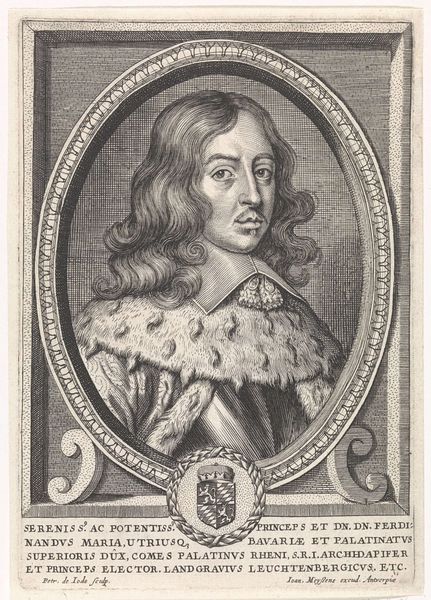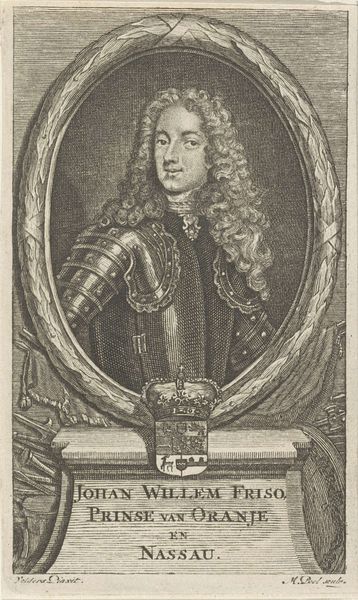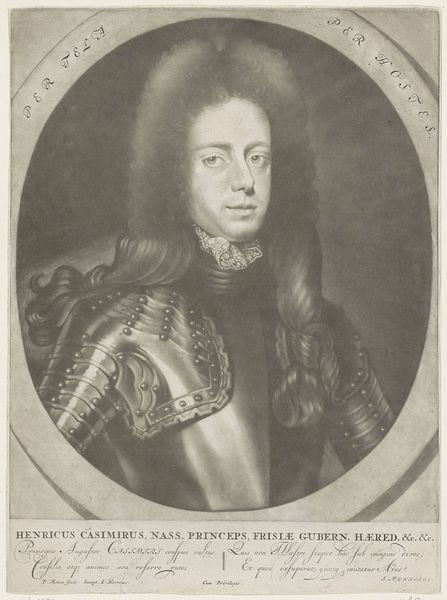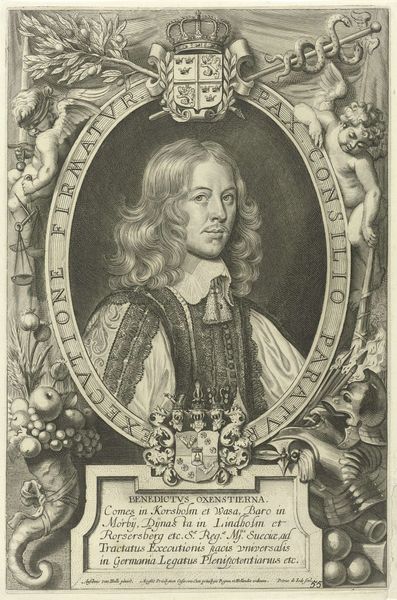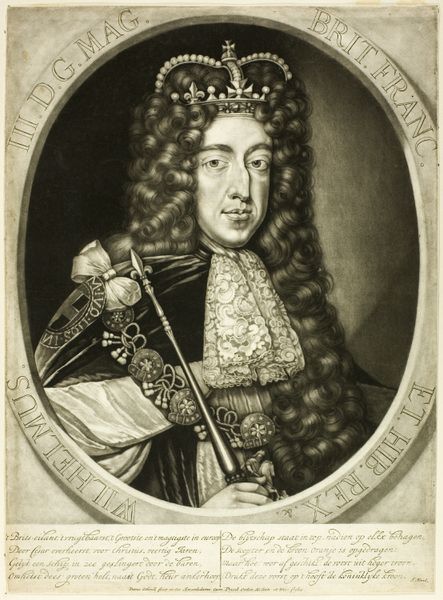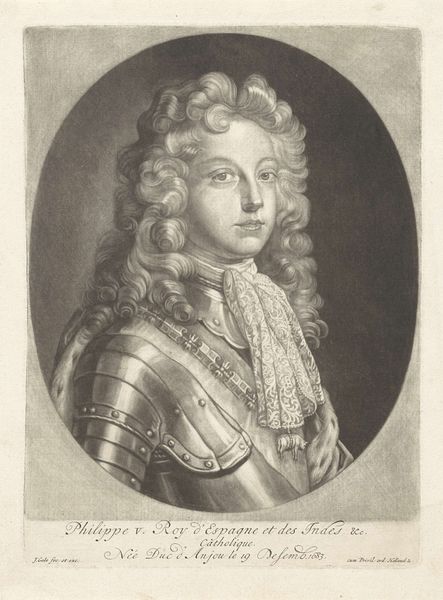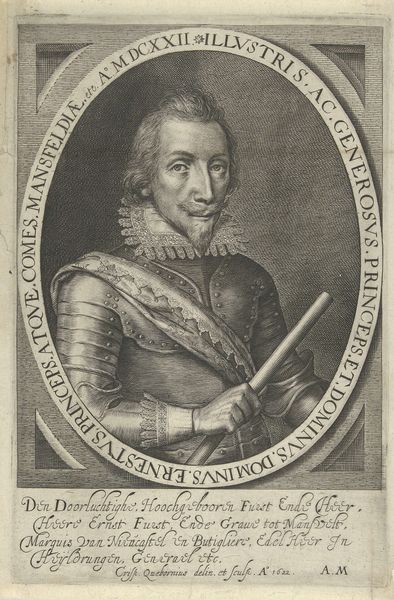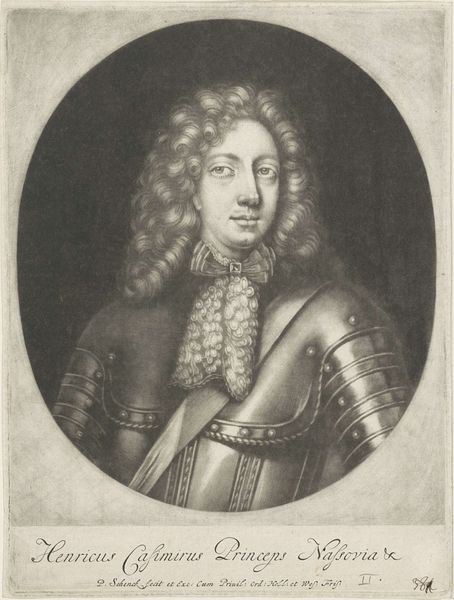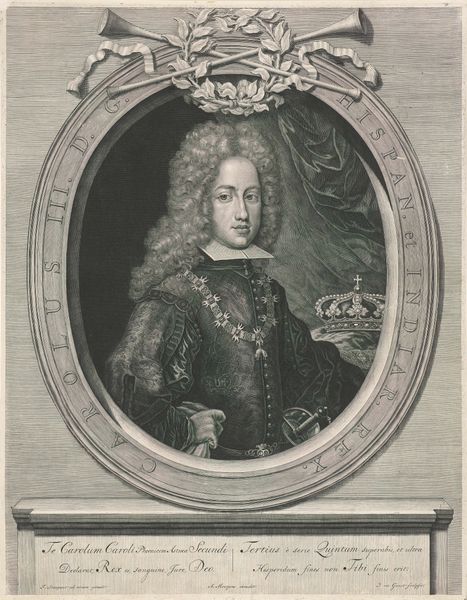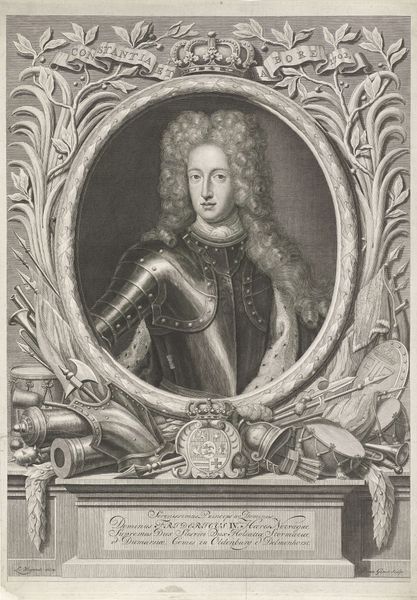
print, engraving
#
portrait
#
baroque
# print
#
history-painting
#
engraving
Dimensions: height 324 mm, width 246 mm
Copyright: Rijks Museum: Open Domain
Editor: Here we have Jan van Somer's "Portret van Karel II, koning van Spanje," or "Portrait of Charles II, King of Spain," an engraving made sometime between 1671 and 1700. It's quite striking, and seeing all of that meticulous detail achieved through the printmaking process is impressive. What can you tell us about this print, focusing on the medium? Curator: Well, given its historical context, the engraving technique is really key to understanding its role. The late 17th century saw printmaking becoming increasingly important for disseminating images and, by extension, power. Look at the armor, the crown—each precisely rendered to communicate authority. Consider the labor involved. Each line painstakingly etched, the plate inked and pressed to paper. It wasn't just about likeness; it was about manufacturing an image of kingship, reproducing it, and distributing it widely. Editor: So, the choice of engraving wasn’t just aesthetic; it was about accessibility and control. The King is literally *imprinted* on society through mass production? Curator: Precisely. It turns the portrait from a unique object into a commodity. Consider, too, the socio-economic implications. Who was commissioning these prints? Who was buying them? Who had access to them? Understanding that distribution network helps us understand how the image functioned in reinforcing societal hierarchies. And how does this reproductive process compare to paintings, traditionally exclusive to nobility? Editor: That makes me think about the skill of the artisan, van Somer. It's almost like he's a cog in the royal propaganda machine. Where does artistic expression fit in? Or is his role more akin to that of a craftsman fulfilling a commission? Curator: Good question. Can we separate craft from art here? He is crafting this very controlled representation for King Charles. Perhaps looking at it that way is much more illustrative of it’s function than judging purely aesthetics. Editor: I see. It's not just about *who* is depicted but *how* and *why* it was made in this particular way. Thanks.
Comments
No comments
Be the first to comment and join the conversation on the ultimate creative platform.
